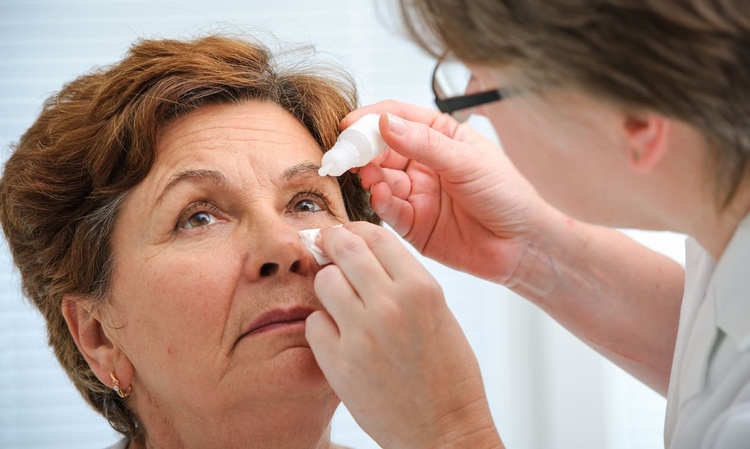Can Macular Degeneration Be Reversed? Here’s What You Should Know
Macular degeneration is one of the leading causes of vision loss, but the journey isn’t the same for everyone. Learn if reversing macular degeneration is possible, the 4 stages to watch for, new treatment options, and what can help slow progression and protect your vision.

Reversing Macular Degeneration: What Science Says
Current medical research indicates that macular degeneration cannot be completely reversed in the traditional sense. The damage to retinal cells, particularly the photoreceptors in the macula, represents permanent tissue loss that modern medicine cannot fully restore. However, this doesn’t mean the condition is entirely without hope or treatment options.
Recent scientific advances have shown promising results in slowing progression and, in some cases, improving visual function. Gene therapy trials, stem cell research, and innovative drug delivery systems continue to push the boundaries of what’s possible. While these treatments may not restore vision to pre-disease levels, they can significantly impact quality of life and functional vision.
The distinction between “reversal” and “improvement” remains important. Some patients experience visual improvements following treatment, particularly those with wet macular degeneration who respond well to anti-VEGF injections. These improvements, while meaningful, typically represent stabilization and modest gains rather than complete restoration of lost vision.
Do You Always Go Blind with Macular Degeneration? Understanding the 4 Stages
Macular degeneration progresses through four distinct stages, and complete blindness is not an inevitable outcome for all patients. The early stage often presents with small drusen deposits under the retina, frequently causing no noticeable vision changes. Many people remain in this stage for years without significant progression.
The intermediate stage involves larger drusen and possible pigment changes in the retina. Some individuals may notice slight vision changes, such as difficulty reading in dim light or recognizing faces at a distance. Regular monitoring becomes increasingly important during this phase.
Advanced macular degeneration splits into two categories: dry (geographic atrophy) and wet (neovascular). Dry advanced macular degeneration involves gradual breakdown of retinal cells, leading to a slowly expanding blind spot in central vision. Wet macular degeneration, though less common, progresses more rapidly due to abnormal blood vessel growth under the retina.
Even in advanced stages, macular degeneration typically preserves peripheral vision. While central vision loss significantly impacts daily activities like reading and driving, most patients retain enough vision to maintain independence with appropriate adaptations and visual aids.
Can You Stop the Progression of Macular Degeneration? Lifestyle and Medical Insights
Preventing progression involves both medical interventions and lifestyle modifications. For individuals with early to intermediate dry macular degeneration, specific nutritional supplements have shown effectiveness in clinical trials. The AREDS2 formula, containing vitamins C and E, zinc, copper, lutein, and zeaxanthin, can reduce progression risk by approximately 25%.
Lifestyle factors play a significant role in disease management. Smoking cessation represents the most important modifiable risk factor, as tobacco use dramatically accelerates progression. Regular exercise, maintaining healthy blood pressure and cholesterol levels, and protecting eyes from ultraviolet light exposure all contribute to slowing disease advancement.
Dietary choices also influence progression rates. Foods rich in omega-3 fatty acids, leafy green vegetables, and colorful fruits provide essential nutrients for retinal health. The Mediterranean diet pattern has shown particular promise in supporting eye health and potentially reducing macular degeneration risk.
Regular ophthalmologic monitoring allows for early detection of progression, particularly the conversion from dry to wet macular degeneration. Monthly at-home monitoring using an Amsler grid can help patients identify sudden changes requiring immediate medical attention.
New Treatment for Dry Macular Degeneration and Injection Advances
The landscape for dry macular degeneration treatment has evolved significantly in recent years. Traditional management focused primarily on nutritional supplementation and lifestyle modifications, but newer therapeutic approaches offer additional hope for patients with advanced dry disease.
Geographic atrophy, the advanced form of dry macular degeneration, now has FDA-approved treatment options. Complement inhibitors represent a new class of drugs designed to slow the expansion of atrophic lesions in the retina. These treatments, administered through intravitreal injections, target specific inflammatory pathways involved in disease progression.
Gene therapy approaches are advancing through clinical trials, with some showing promising results for specific genetic subtypes of macular degeneration. These treatments aim to address underlying genetic causes of disease rather than just managing symptoms or slowing progression.
Sustained-release drug delivery systems are also under development, potentially reducing the injection frequency required for treatment. These innovations could significantly improve patient compliance and quality of life while maintaining therapeutic effectiveness.
Wet Macular Degeneration Injection Treatment and Anti-VEGF Options Explained
Anti-VEGF (vascular endothelial growth factor) injections have revolutionized wet macular degeneration treatment over the past two decades. These medications work by blocking the protein that promotes abnormal blood vessel growth under the retina, effectively addressing the root cause of wet macular degeneration.
Several anti-VEGF medications are available, including ranibizumab, aflibercept, and bevacizumab. Each has specific dosing schedules and characteristics, allowing ophthalmologists to tailor treatment to individual patient needs. Most patients require monthly injections initially, with some transitioning to less frequent maintenance schedules based on disease response.
Treatment response varies among patients, but many experience vision stabilization and some improvement. Early intervention typically yields better outcomes, emphasizing the importance of prompt treatment when wet macular degeneration is diagnosed. Regular monitoring and consistent treatment adherence remain crucial for optimal results.
Newer anti-VEGF agents and combination therapies continue to emerge, offering additional options for patients who don’t respond adequately to first-line treatments. Some newer medications provide longer intervals between injections while maintaining therapeutic effectiveness.
This article is for informational purposes only and should not be considered medical advice. Please consult a qualified healthcare professional for personalized guidance and treatment.




